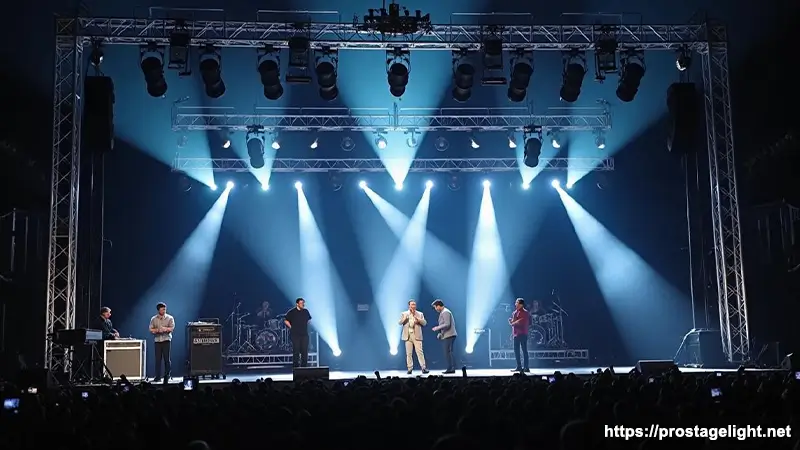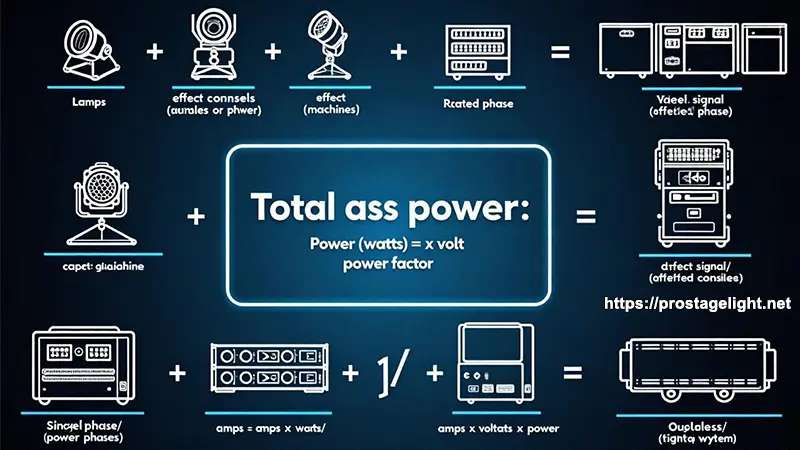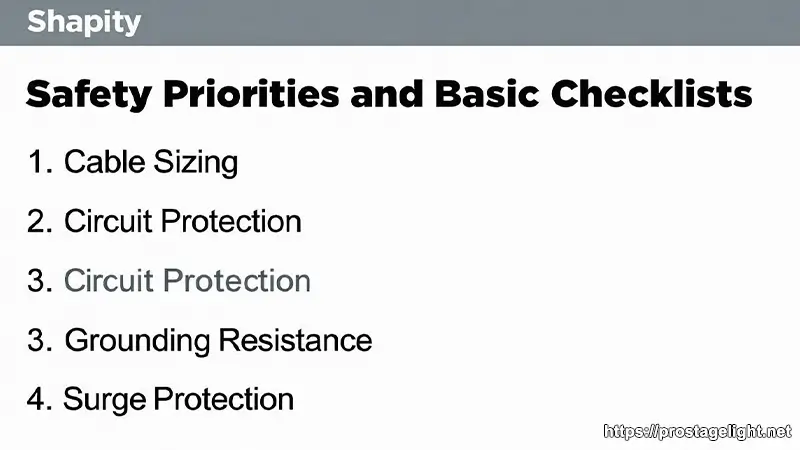Whether you’re setting up for a concert, theater production, or corporate event, getting your stage lighting power calculations right is crucial. Underestimate, and you risk tripping breakers mid-show; overestimate, and you might overspend on unnecessary gear.
So, how do you calculate your total electricity consumption for a day? How do you ensure everything runs smoothly without any hiccups? In real-world scenarios, it’s not just about plugging numbers into a formula from a textbook. You need to get practical and consider the following steps:

Calculate Total Power of All Equipment
Aggregate the rated power of all lighting equipment, including fixtures, control consoles, effects machines, power and signal distribution systems, etc. Specify whether single-phase or three-phase power supply is required.
Demand Factor Method
Calculate the actual load: Determine the demand factor based on the simultaneous usage rate of the equipment (typically 60% to 80%).
Calculated Load = Total Power × Demand Factor
Three-Phase Load Balancing Optimization(Three-phase voltage)
Distribute single-phase loads evenly across the three-phase circuits, ensuring the deviation is controlled within 15% to avoid neutral line overload.
Redundancy and Buffer
Add 20% to 30% redundancy to accommodate temporary equipment additions or power fluctuations.

Mathematical Formula:
To calculate power, use the formula: Power (Watts) = Amps × Volts × Power Factor. Then, convert watts to kilowatts by dividing by 1,000. Finally, calculate your electricity cost by multiplying kilowatts by the usage time (in hours) and your local electricity rate.
In short:
Electricity Cost = (Amps × Volts × Power Factor ÷ 1,000) × Usage Time × Local Electricity Rate.
This formula helps you estimate your electricity bill for running your stage lighting setup.
Finally, we have a few safety points, all of which are must-do lists:
1. Cable Sizing:
Use cables one size larger than required.
2. Circuit Protection:
Install ground fault circuit interrupters (GFCIs) on each circuit.
3. Grounding Resistance:
Ensure grounding resistance is ≤4Ω.
4. Surge Protection:
Equip the distribution panel with surge protection modules (custom order required, priced between $20 and $60).

